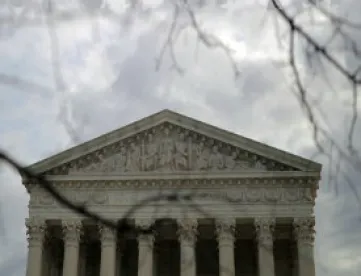In its second opinion this week with wide-ranging implications for the inter-partes review (“IPR”) process, the Supreme Court on Tuesday addressed whether the Patent Trial and Appeal Board (“PTAB”) has the authority to institute review on a sub-set of claims from a challenger’s petition. In a 5-4 decision penned by Justice Gorsuch, the Supreme Court said no. Now, the PTAB has a binary choice – review all of the challenged claims, or none of them.
The petitioner in the case, SAS Institute Inc., filed for inter-partes review of every claim of a software patent. In almost every respect, SAS was successful in the proceeding. First, the PTAB agreed that review was warranted, finding that SAS demonstrated a reasonable likelihood that it would prevail on at least one challenged claim. The PTAB’s final written decision also ruled in SAS’s favor on nearly every challenged claim.
However, the PTAB did not address all of the claims that SAS challenged in its original IPR petition. Instead, relying on a Patent Office regulation permitting “partial institution” of an IPR petition—which allowed the PTAB to “authorize the review to proceed on all or some of the challenged claims”—the PTAB declined to review a handful of the claims in SAS’s petition. That decision, SAS argued, exceeded the PTAB’s authority. The Supreme Court agreed.
According to the majority opinion, the America Invents Act (specifically 35 U.S.C. § 318(a)), “imposes a nondiscretionary duty” on the PTAB to implement a review on every claim challenged by a petitioner, or decline to review any such claims. The Court hinged its decision on “the plain text of § 318(a),” which “directs that ‘[i]f an inter partes review is instituted and not dismissed under this chapter, the [Board] shall issue a final written decision with respect to the patentability of any patent claim challenged by the petitioner . . .’” (Emphasis in original.) The Court found that the word “shall” in the statute imposed the nondiscretionary duty, and that the words “any patent claim” meant “every patent claim.” According to the Court, therefore, “Congress chose to structure a process in which it’s the petitioner, not the Director, who gets to define the contours of the proceeding.”
The Court found further support for its ruling by “compar[ing] this structure [of the America Invents Act] with what came before.” Indeed, in the ex parte reexamination statute, Congress explicitly gave the Patent Office authority to “investigate the question of patentability ‘[o]n his own initiative, and at any time.’” In contrast, the Court noted, the America Invents Act only gives the PTAB authority to determine “whether” to institute an IPR – i.e., “a binary choice.”
The four members of the dissent—Justices Breyer, Ginsburg, Sotomayor, and Kagan— were not convinced that the outcome was so simple. According to Justice Ginsburg’s one-paragraph dissent, the PTAB could simply circumvent the Court’s decision to accomplish the same result as the now-defunct regulation:
. . . the Patent Trial and Appeal Board could simply deny a petition containing challenges having no ‘reasonable likelihood’ of success, 314(a). Simultaneously, the Board might note that one or more specified claims warrant reexamination, while others challenged in the petition do not. Petitioners would then be free to file new or amended petitions shorn of challenges the Board finds unworthy of inter partes review. Why should the statute be read to preclude the Board’s more rational way to weed out insubstantial challenges?
(Dissent at 1.)
Separately, Justice Breyer found a “gap” in the statute’s text that he reasoned the PTAB had properly filled with its regulation. According to Justice Breyer, the phrase “any patent claim challenged by the petitioner,” of 35 U.S.C. §318(a) did not “unambiguously refer . . . to ‘any patent claim challenged by the petitioner’ in the petitioner’s original petition” (emphasis in original). Indeed, “without added words, the phrase ‘challenged by the petitioner’ does not tell us whether the relevant challenge is one made in the initial petition or only one made in the inter partes review proceeding itself.” And from a common sense standpoint, Justice Breyer asked why “would Congress have intended to require the Board to proceed with an inter partes review, take evidence, and hear argument in respect to challenges to claims that the Board had previously determined had no ‘reasonable likelihood’ of success?”
The effects of the Court’s decision are less than certain. For example, unless the PTAB takes a hint from Justice Ginsburg’s dissent, the decision could create a substantial amount of extra work for the agency, if it continues instituting IPRs at its current pace. One potential consequence is an uptick in denials of IPR petitions. That is, the PTAB may need to rely more heavily on its “normally not reviewable” discretion to deny IPR petitions – especially those with fewer meritorious challenges.
On April 26, 2018, the PTAB issued guidance on how it intends to proceed in view of the SAS decision. For pending trials in which a panel has instituted trial on all of the challenges raised in the petition, the panel will continue with the proceeding in the normal course. By contrast, for pending trials in which a panel has instituted trial only on some of the challenges raised in the petition (as opposed to all challenges raised in the petition), the panel may issue an order supplementing the institution decision to institute on all challenges raised in the petition.
Additionally, for pending trials in which a panel enters an order supplementing the institution decision pursuant to this notice, the panel may take further action to manage the trial proceeding, including, for example, permitting additional time, briefing, discovery, and/or oral argument, depending on various circumstances and the stage of the proceeding.
We will keep you posted as the dust starts to settle. Stay tuned.
The case is SAS Institute Inc. v. Iancu, (No. 16-969) in the United States Supreme Court. A copy of the slip opinion can be found here.




 />i
/>i

